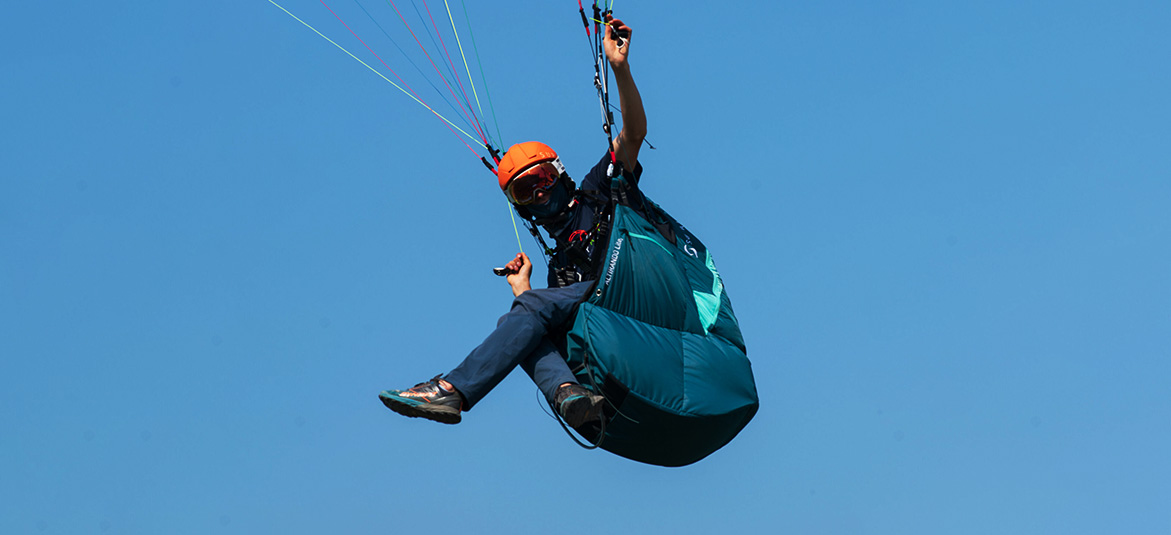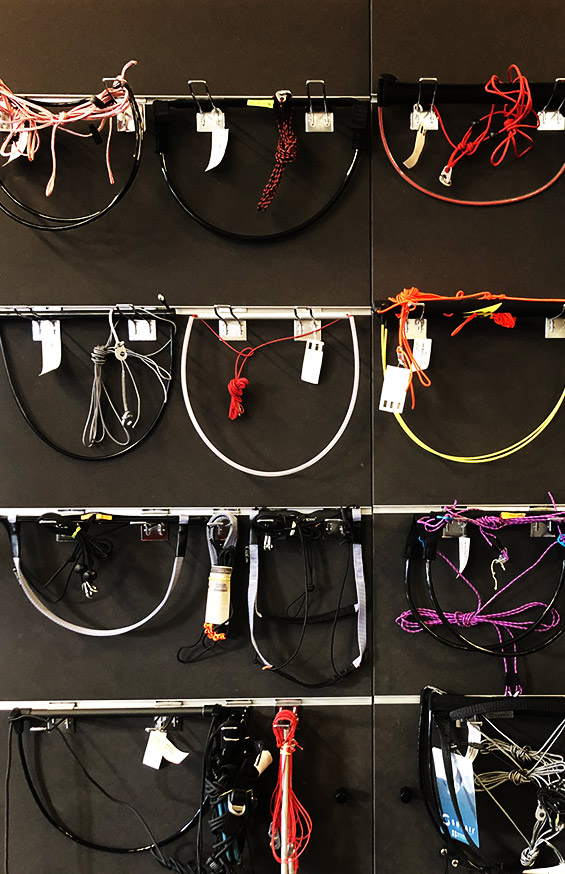Paragliding speed-bar : how to choose ?


Paragliding is a discipline that combines practicality and technical skill. But to reach the heights and make the most of every flight, it's essential to choose the right equipment. The paragliding speed system is a key accessory that can transform your flying experience. In this article, we'll explore how to choose the right speed bar for your paraglider, taking into account the functionality, type, number of bars, and settings needed to optimize your performance in the air.
WHY USE A SPEED-BAR WHEN PARAGLIDING ?
There are two main reasons for using a speed system in paragliding.
The first is that it's an invaluable tool for pilots looking to optimize their flight performance, especially during competitions and/or long-distance flights.
The second reason is safety. The gas pedal can be used to get out of situations where the wing's standard cruising speed would not allow us to escape. For example, to move forward into the wind, or to get as far away as possible from a threatening cloud!
HOW DOES A PARAGLIDER SPEED BAR WORK ?
The paraglider speed-bar is a device that allows the pilot to increase the speed of the glider by reducing its angle of attack. This is achieved via a system of pulleys and webbing deflectors, pulling on the front risers, then the B risers and more, depending on the number of risers. By pressing on the speed bar, the pilot can change the wing's pitch to gain speed.
Paragliding speed-bar come in a variety of models, from light versions to more robust models with carbon bars. Well-known brands such as Supair, Neo and Kortel Design offer a range of gas pedals to suit different flying styles and personal preferences. Whether you're looking for a light bar gas pedal for an ultra-light harness or a more traditional model, it's important to choose a speed-bar that matches your type of glider and skill level.
WHAT'S THE DIFFERENCE BETWEEN A FLEXIBLE AND RIGID SPEED-BAR ?
Speed-bar for paragliders fall into two main categories : soft and rigid. Soft speed-bar use straps or ropes that can be operated with the feet. They are often lighter and easier to carry, making them ideal for pilots who prefer their equipment to be light, as in the case of walk-and-fly paragliding with ultra-light harnesses.
On the other hand, rigid speed-bar are generally equipped with a first flexible bar for easy activation, followed by one or two rigid bars. Often made of composite materials such as carbon, or aluminum, the rigidity of the bar provides a stable platform for pushing and accelerating. However, you need to aim for the center of the bar to avoid asymmetrical acceleration. These models are appreciated for their durability and ease of use, especially when wearing gloves or in difficult conditions. Models such as the FreeSpee bar speed-bar or the Gin bar speed-bar are highly prized for their robust construction and reliability.
HOW DO YOU KNOW HOW MANY BARS TO CHOOSE FOR YOUR PARAGLIDER SPEED-BAR ?
The choice of the number of bars on a paraglider speed-bar depends essentially on the type of flying you do and your personal preferences. A single-bar speed system is generally sufficient for most recreational pilots, and especially for Hike & Fly pilots, who rarely need to adjust the throttle. Competition pilots or those seeking to maximize their performance will prefer a two- or three-bar throttle, which offers greater control and comfort during acceleration.
Models such as the standard Supair 3-bar throttle or the FreeSpee 2 or 3-bar throttle are designed to offer excellent force transmission and precise steering. It's important to note that the more bars there are, the more blur the system may generate during use, so familiarization with the equipment in calm conditions may be necessary to get used to the speed-bar.

HOW TO ADJUST YOUR SPEED-BAR IN PARAGLIDING ?
Speed-bar adjustment is crucial to ensure reliable and comfortable acceleration. Incorrectly adjusted speed bar can lead to unnecessary leg fatigue, poor posture and, if set too long, the inability to use the full travel of the speed bar. To set your speed bar correctly, start by attaching it to your harness according to the manufacturer's instructions. Make sure that the straps or bars are at a comfortable distance from your legs, and that you can reach them easily in flight.
It's also important that the tension is correctly adjusted to prevent acceleration just by sitting in the harness without pilot action. The FreeSpee brand stands out in this respect, with well-designed speed-bar that are extremely easy to adjust. You can easily adjust the speed bar using hooks, also known as split hooks, and some models are adjustable using a set of three self-locking holes that pinch the speed bar halyard in on itself. To adjust, simply release the tension and adjust as required.
In conclusion, choosing the right speed system for your paraglider is a decision that can have a significant impact on your flying experience. Take into account the type of flight, weight, compatibility with your harness and gliders, as well as the price and quality of accessories. Don't forget that safety and comfort are paramount, so investing in and maintaining quality equipment is essential. With the right gas pedal, every flight can be an exhilarating adventure and an opportunity to push your limits in the sky.







